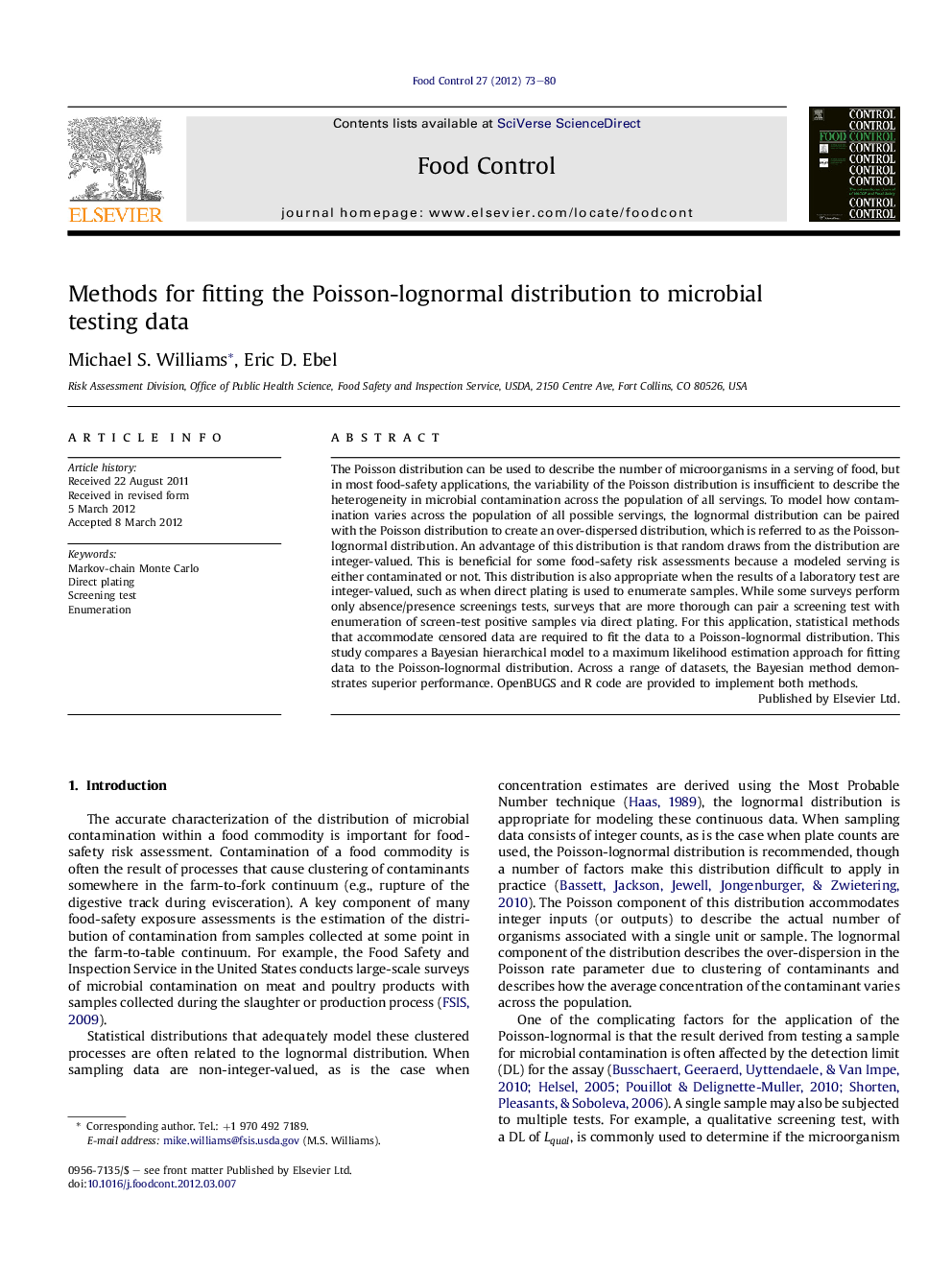| Article ID | Journal | Published Year | Pages | File Type |
|---|---|---|---|---|
| 4559609 | Food Control | 2012 | 8 Pages |
The Poisson distribution can be used to describe the number of microorganisms in a serving of food, but in most food-safety applications, the variability of the Poisson distribution is insufficient to describe the heterogeneity in microbial contamination across the population of all servings. To model how contamination varies across the population of all possible servings, the lognormal distribution can be paired with the Poisson distribution to create an over-dispersed distribution, which is referred to as the Poisson-lognormal distribution. An advantage of this distribution is that random draws from the distribution are integer-valued. This is beneficial for some food-safety risk assessments because a modeled serving is either contaminated or not. This distribution is also appropriate when the results of a laboratory test are integer-valued, such as when direct plating is used to enumerate samples. While some surveys perform only absence/presence screenings tests, surveys that are more thorough can pair a screening test with enumeration of screen-test positive samples via direct plating. For this application, statistical methods that accommodate censored data are required to fit the data to a Poisson-lognormal distribution. This study compares a Bayesian hierarchical model to a maximum likelihood estimation approach for fitting data to the Poisson-lognormal distribution. Across a range of datasets, the Bayesian method demonstrates superior performance. OpenBUGS and R code are provided to implement both methods.
► The study compares methods for fitting a Poisson-lognormal model to data consisting of screen test and integer count data. ► A Bayesian model and a maximum likelihood approach are proposed for fitting the Poisson-lognormal distribution. ► A simulation study is performed to assess the performance of the two fitting methods. ► Significant biases in the parameter estimates can occur when using the maximum likelihood technique. ► OpenBUGS and R code are provided.
